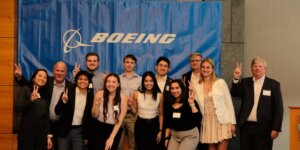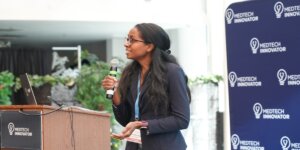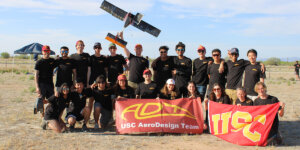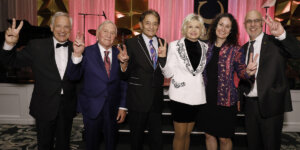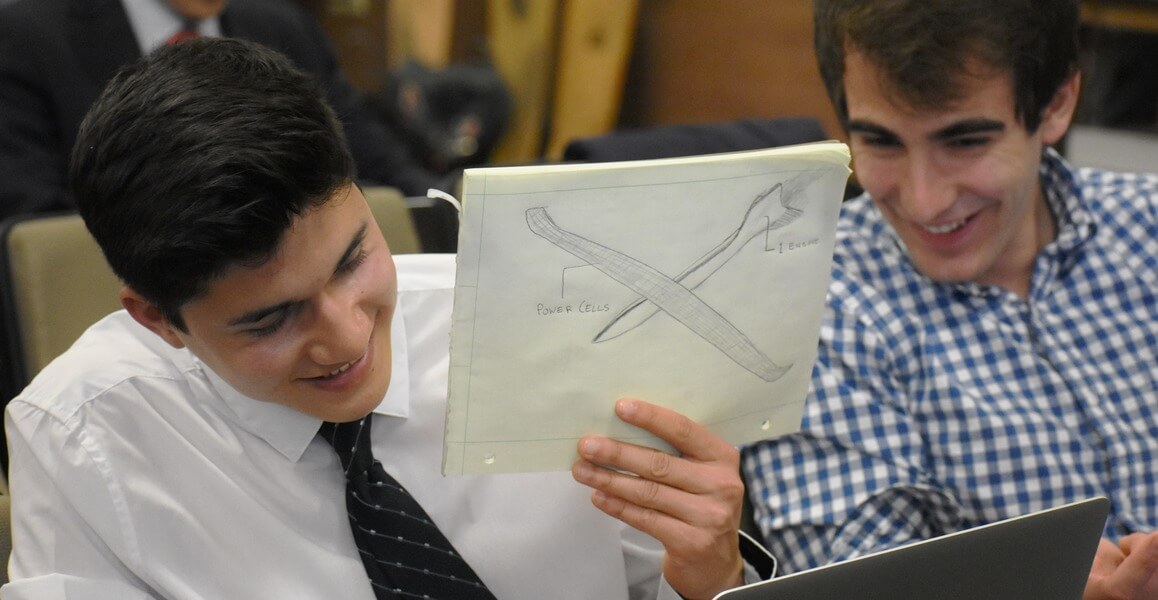
Viterbi students Lorand Cheng and Baran Cinbis demonstrate a rough sketch of their aircraft design. Photo credit: Nick Nuccio
Editor’s Note: the following event was March 5, 2020 before more restrictive social distancing measures were put into effect.
“30 seconds left!” came a call from the front of the room.
A momentary hush fell over the hundreds of students in the lecture hall, followed by a flurry of action and conversation. The students, clumsily situated in small groups around the room, exchanged rushed remarks with each other, as they furiously typed on their laptops.
“Three… two… one… Time’s up!” announced the Boeing employee, as the last few panicked students pressed the submit button. Nearly every student in the room let out a sigh of relief, the tension on their faces slowly melting away.
The students were participants in this year’s Boeing Freshman Design Challenge, an annual event in which representatives from Boeing come to the USC Viterbi School of Engineering to excite freshmen about aerospace engineering.
“We want to give first year engineering students exposure to the type of real word problems they may see in engineering in the aerospace field,” said Scott Strode, a USC Viterbi alumnus, three-time USC parent and vice president of Boeing’s Defense, Space and Security division. “We hope that by seeing our teams on campus, and working the challenge, it will inspire them to pursue a career in aerospace.”
Fifteen teams of four USC Viterbi freshmen participated in the challenge, in which they were asked to design a solar-powered communications aircraft. They were given 90 minutes to create a presentation detailing the weight, cost and specifications of their planes, using only a provided spreadsheet and their own brainpower.
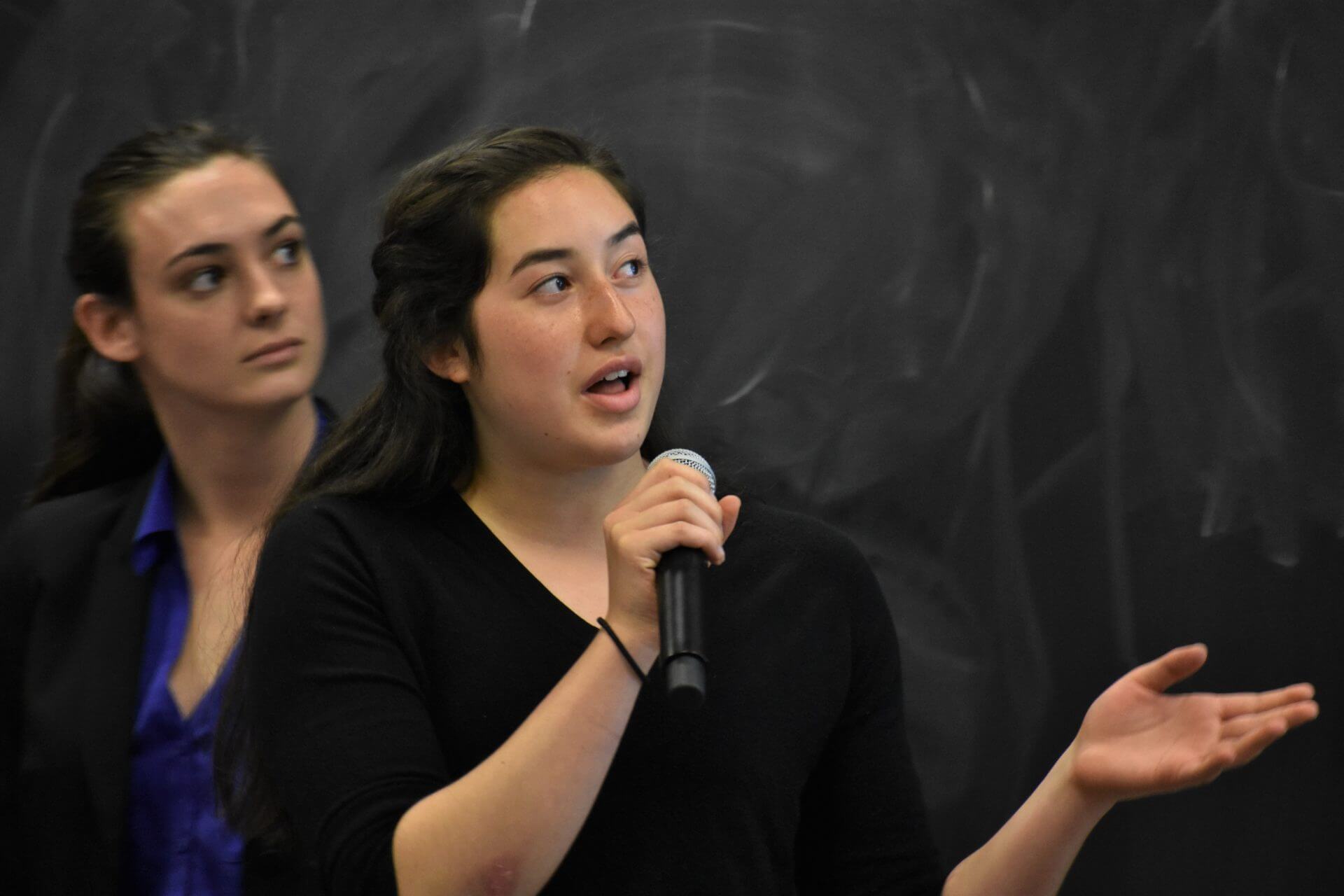
USC Viterbi student, Judy Loyd, member of the winning team, Green Aviation, presents her design. In the background: teammate Peyton Erickson. Photo by Nick Nuccio
The judging panel consisted of about a dozen USC alumni who work at Boeing in many different backgrounds and multiple fields. After an initial review, the five most promising groups got a chance to give one last pitch and blow the judges away.
The final winners were Green Aviation, a team consisting of Peyton Erickson, Ben Hwang, Judy Loyd and Josh Zou. All four members were total strangers before the competition and were pleasantly surprised to come home with the gold.
“Young diverse engineering talent is the future for Boeing, and for our industry.”
Scott Strode
“It was a great feeling to win a design contest competing against some very talented teams with a group of individuals who had met less than ten minutes before,” said Erickson.
The winning team received Boeing 787 airplane models, as well as some generous praise from the judges for thinking outside of the box and prioritizing safety in their design.
“Although we may not have the longest range or the highest amount of lift, our design would be the most efficient in providing the most amount of possible range for the least amount of money.” said Hwang. “We also included one important safety design feature that I think won us the competition: we had a second engine that would allow the first (engine) to fail, and the plane could still complete its mission.”
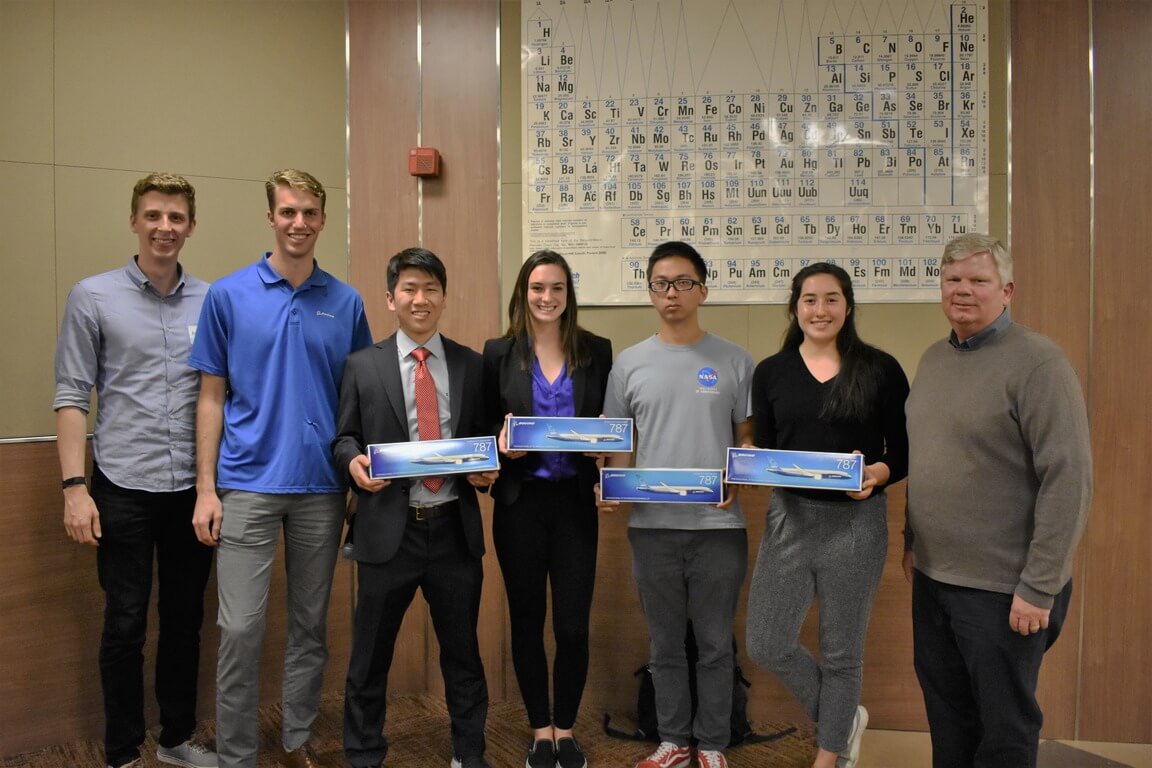
From left: Boeing employees Aaron Vanlandingham and Alan Simonini; USC Viterbi freshmen Ben Hwang, Peyton Erickson, Josh Zou and Judy Loyd; and Boeing vice president, Scott Strode. Photo by Nick Nuccio
The second place team, “Knoeing,” received Boeing mugs as a reward for their hard work. The team consisted of Mandy Hartman, Trisha Khandelwal, Jack Onufer and Angus Turnor.
“After we finished our presentation, a Boeing employee showed us that they were in the process of developing an aircraft that looked very similar to our design,” marveled Khandelwal.
“Young diverse engineering talent is the future for Boeing, and for our industry.” commented Strode. “We recognize that what made us a success over the past 100 years needs to change to stay innovative and competitive.”
Published on April 14th, 2020
Last updated on June 5th, 2023




